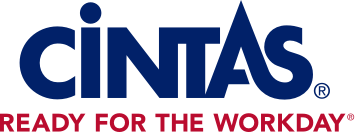Naloxone: One spray could help reverse an overdose
Opioid overdose is the leading cause of accidental deaths in the U.S., and it accounts for nearly 10% of injury deaths in the workplace. During an overdose, opioids can stop a person’s breathing, and within minutes, it can quickly lead to brain damage, severe disability and death. The average response time of Emergency Medical Services (EMS) is 13.3 minutes, so helping overdose victims as soon as possible while help arrives is critical. But how?
The answer is Naloxone.
What is Naloxone?
Naloxone is an over-the-counter medication that can rapidly reverse the effects of an opioid overdose and can be used by anyone. It works by attaching to opioid receptors and blocking the effects of other opioids, which can quickly restore someone’s breathing within two to five minutes.
Naloxone is safe to use on all ages, from infants to older adults, and it won’t harm someone if it turns out opioids were not in their system.
Two forms are available — nasal spray or injection. A single dose can quickly help reverse the effects of an overdose, but some stronger opioids, like fentanyl, may require multiple doses. Naloxone works to reverse the effects of an overdose in the body for only 30 to 90 minutes, which is why it is important to call 911 as soon as an overdose is suspected. Administering Naloxone may reverse the effects at the onset, but making sure the person gets immediate, professional medical attention is crucial.
Government support for Naloxone availability
In December 2023, the U.S. Department of Health and Human Services and the U.S. General Services Administration jointly issued guidelines that recommend opioid reversal nasal spray, like Naloxone, be available in safety stations on site at all federal facilities.
Maryland required all public buildings to have Naloxone co-located with each AED by January 2025. And California law mandates that by December 31, 2026, all workplaces have Naloxone in their first aid kits.
Most U.S. states have passed Good Samaritan laws protecting bystanders who call for medical assistance for an overdose victim and Naloxone Access Laws that protect people who administer Naloxone to help.
Naloxone as part of your safety culture
Opioid overdose is a growing, silent threat in the workplace. You may not know someone is experiencing it until it’s too late. Be prepared by keeping a Naloxone opioid overdose kit, like the ones available from Cintas First & Aid Safety, on site.
Get training for your team on how to administer Naloxone and educate them on what to do if they suspect someone is having an overdose. Document protocols as part of your safety plan.
In the event of an overdose, every second counts. Contact us to schedule a training and learn how our on-site kits can help.
